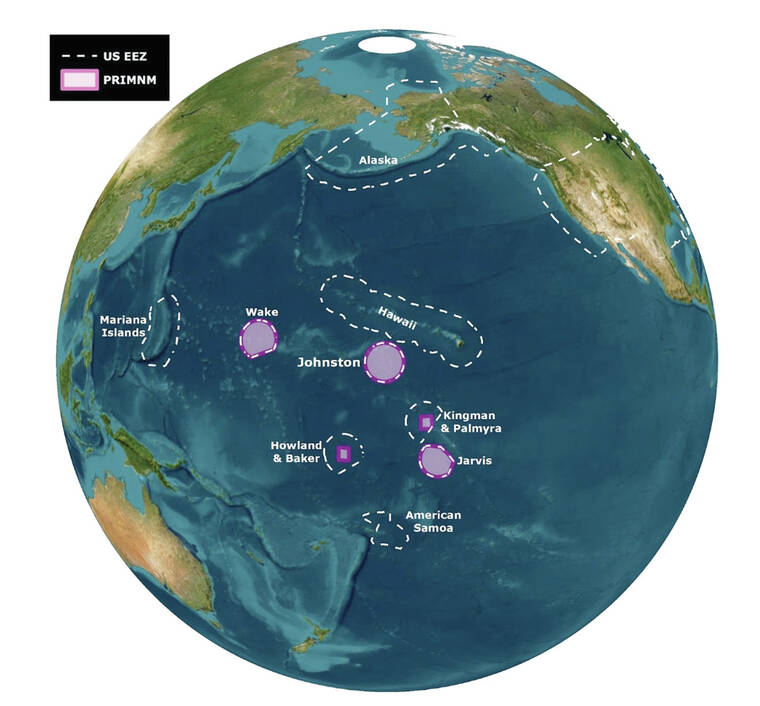HONOLULU — They may not be 20,000 leagues under the sea, but the waters surrounding Johnston Atoll are full of mystery all the same.
Researchers with maritime nonprofit Ocean Exploration Trust (OET) set sail from Honolulu on Wednesday for a 27-day expedition aimed at better understanding deep-sea environments surrounding Johnston Atoll, an uninhabited island approximately 800 miles south of Hawai‘i.
While recent expeditions increased researchers’ understanding of deep-sea resources in the area, much of the seafloor — including several ancient seamounts — remains completely unexplored. As such, the OET team plans to send remotely operated vehicles as deep as 13,000 feet underwater to map the uncharted waters.
“To date, just over half of all the United States’ underwater territories have been mapped with modern precision, and most areas have not been systematically studied or explored,” said Aurora Elmore, National Oceanic and Atmospheric Administration Ocean (NOAA) Exploration Cooperative Institute (OECI) manager. “By working closely with partners like the OECI and OET, we are working to fully explore the deep sea in support of national priorities.”
For conservationists, this undersea region holds heightened importance. As part of the Pacific Remote Islands Marine National Monument, its marine life — including honu, Hawaiian monk seals, corals and approximately 300 fish species — are protected from commercial fishing and other resource extraction.
NOAA officials are currently redeveloping the monument’s management plan, meaning additional information gathered on undersea flora and fauna could help fine tune the agency’s efforts in the coming years.
Additionally, the NOAA is considering designating 770,000 square miles of marine areas, including regions surrounding Johnston Atoll, as a national marine sanctuary, which could provide further protections for marine wildlife in the area.
“Despite historic efforts, the area around Johnston Atoll presents us with large knowledge gaps,” said Steve Auscavitch, co-lead scientist of the expedition. “It’s important to know what is there to better manage and conserve these ecosystems in the future.”
While the 33-member team of scientists, engineers, educators and students set off on EV Nautilus, the trust’s 223-foot research ship, the other approximately 8 billion people on Earth don’t have to feel left out. Audiences worldwide can join the expedition from the comfort of their homes at NautilusLive.org, where the trust is hosting a 24-7 livestream of the journey.
Explorers aboard EV Nautilus are even available for free, live Q&A sessions with schools, camps and community groups in English or ‘Olelo Hawai‘i. Organizations interested in scheduling a session can sign up at nautiluslive.org/education/ship-to-shore-interactions.
In addition to allowing anyone to be a virtual sailor, the livestream actually serves a purpose for the researchers.
“The telepresence capabilities of EV Nautilus are not just a great tool to transport public audiences to these remote places,” said expedition leader Dwight Coleman. “But they also allow us to harness the intellectual capacity of scientists from around the world. Many of the discoveries of EV Nautilus are facilitated by scientists that are not physically on the ship, but join us remotely via telepresence.”
After 27 days of underwater mapping and analysis, the crew will return to Honolulu. However, Auscavitch notes that even once the crew reaches land, their job will still be far from over.
“Our work does not end when we get back to the dock,” he explained. “The specimens and materials we collect will be housed in repositories, and scientists all over the world can use them to make new discoveries for decades to come.”
•••
Jackson Healy, reporter, can be reached at 808-647-4966 or jhealy@thegardenisland.com.





